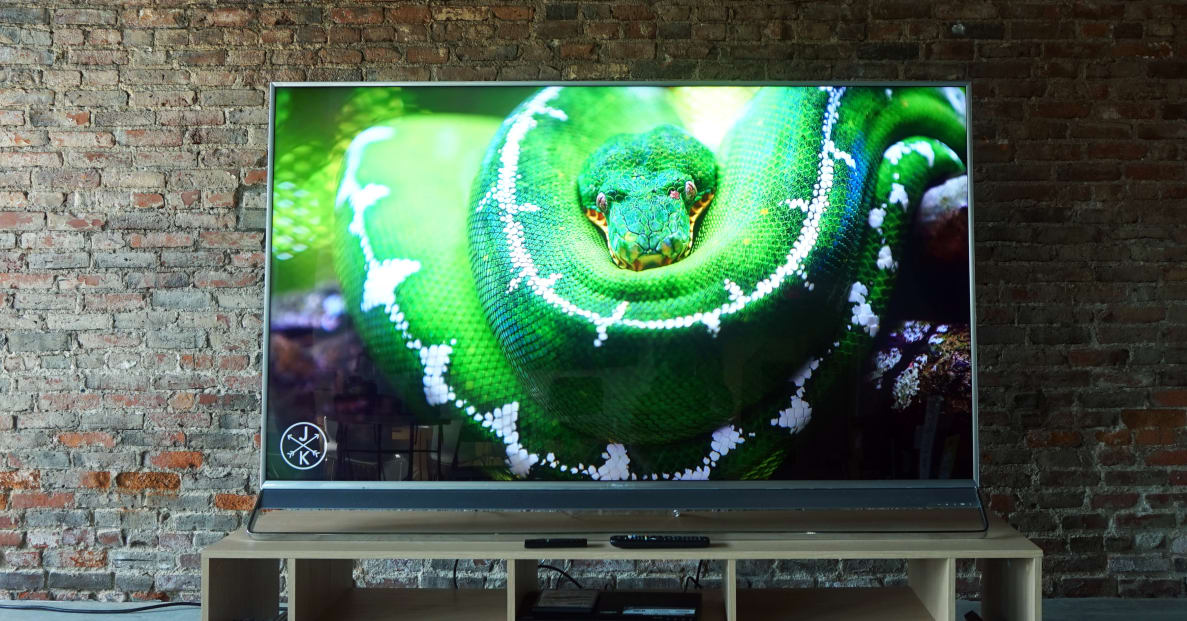Pros
Cons
However, while the company has been carving out a good niche for itself in the budget/sub-$500 category, the Hisense H10D is a step in a different direction. This is Hisense's 2017 flagship TV, and it boasts a collection of picture quality-enhancing technology that Hisense hopes will see them competing with the top 4K/HDR TVs from brands like Samsung, LG, and Sony.
Hisense's flagship H10 offers very solid picture quality thanks to a svelte combo of full-array local dimming, quantum dot color, 4K resolution, and finely tooled video processing. It's not the poshest TV from a design or software standpoint, but the H10D still definitely delivers on its flagship status—now let's see if Hisense can deliver it to consumers.
About the H10D Series
Right now, Hisense's H10D Series is only available in one screen size:
• 75-inch (Hisense 75H10D), MSRP $5,999
We received the 75-inch H10D as a loan unit from Hisense—the company delivered the massive TV to our offices/labs in person and helped me assemble it for a demo prior to our normal review/evaluation process.
The 75-inch H10D is apparently something of a special case, as it's not (at the time of our review, anyway) available for purchase, though we expect the series to be available to the public soon. Our review unit is technically a pre-production model, so we won't be awarding it a score until a post-production model is available for review.
Key specs:
• 4K resolution (3,840 x 2,160) • High Dynamic Range (HDR10) compatibility • Full-array local dimming (LED) backlit • Quantum dot (film-based) wide color gamut • 120 Hz native refresh rate • Built-in smart features (apps)
Like the Brawny man, the H10D is handsome in that rugged, uh, woodsy sort of way
Bet you've never heard a TV described as "woodsy" before. Okay, I admit, it's a terrible adjective here. But this is the first time we've had a 75-inch TV in the lab in a very long time, and I'm just a little overwhelmed by its sheer hugeness. Cut me some slack.
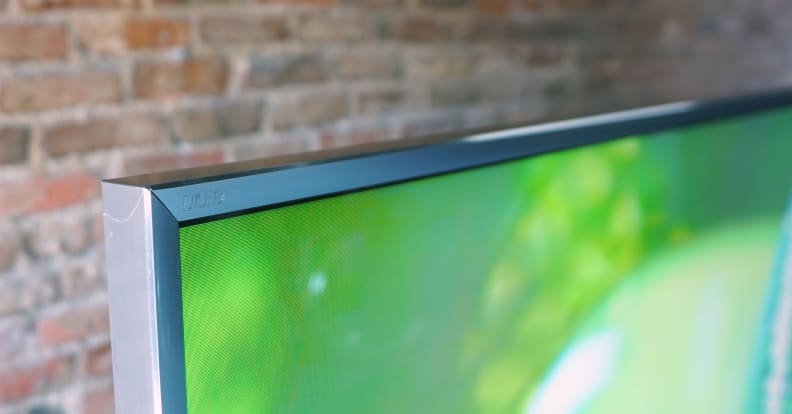
This is a 75-inch (deep breath) 4K HDR full-array LED backlit quantum dot-equipped smart TV, so a minimalist design is not really in the cards. I admit, while there aren't a ton of $6,000 TVs on the market, the H10D is still probably the least attractive from amongst them. LG's OLEDs have fumbled through some goofy fashion choices over the last three years, but they're looking good now. Even the Vizio Reference Series, while no less bulky than the H10D, has a more realized aesthetic.
The 75-inch H10D wields a wide, minimalist metal stand that extends from the bottom of the TV outward, and rests upon a big plastic ballast thing. Frankly, it's not the most elegant nor the most attractive solution, but it does do the job of keeping the TV standing up so you can watch it. And that's somethin'.
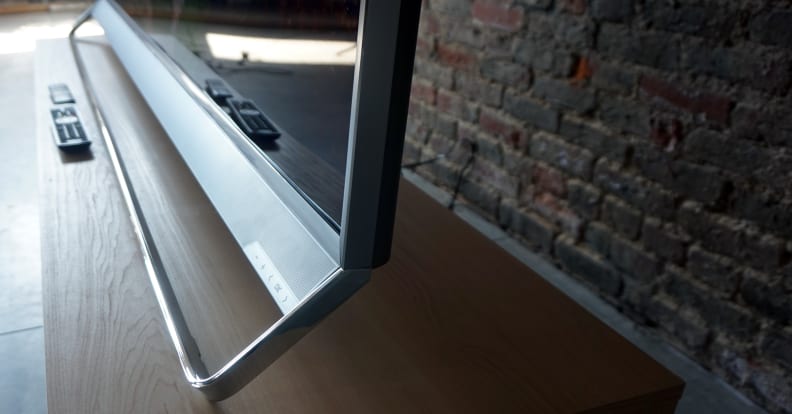
Outside of the looks department, the H10D is plenty robust from a connectivity standpoint. You get four HDMI inputs, though only two of them are HDCP 2.2/4K UHD compatible. The other two are HDMI 1.4, which will pass 4K, but not HDR. The H10D also has three USB inputs (one 3.0, two 2.0), shared component/composite inputs, coaxial (RF) input for cable/satellite, and optical/analog audio outputs. My only issue is—come on, this TV is $6,000. Can we really not get four HDCP 2.2 HDMI ports??
Lastly, the included remote suffers from the same "problem" as the TV itself. It's robust from a usability standpoint, but simply not sleek or design-facing. No, it's safe to say you're paying for the sheer size and feature set of this product—it notably lacks the sheen of "premium" options like QLEDs and OLEDs.
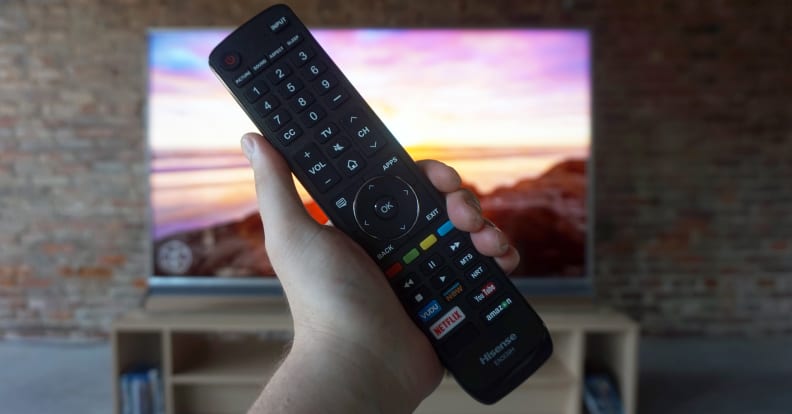
Despite its myriad premium features, the biggest draw here is still the size
It's hard to make a 75-inch TV that looks good, at least where LED/LCD sets are concerned. The larger an LED TV is, the more finely its LED backlight needs to be tuned and balanced to create good contrast and properly saturated colors, without introducing problems like light bleed or flashlighting, when LED operation is visible in darkened parts of the screen.
The best way to mitigate these effects is to use a "full-array" LED backlight, where LEDs are located behind the entire screen rather than just along the perimeters, which is the case with "edge-lit" LED TVs. Not only does the H10 use a full-array LED backlight, it also uses a process called local dimming (something Hisense is calling "contrast control zones"), which allows it to dim and boost its LEDs in independent zones around the screen.
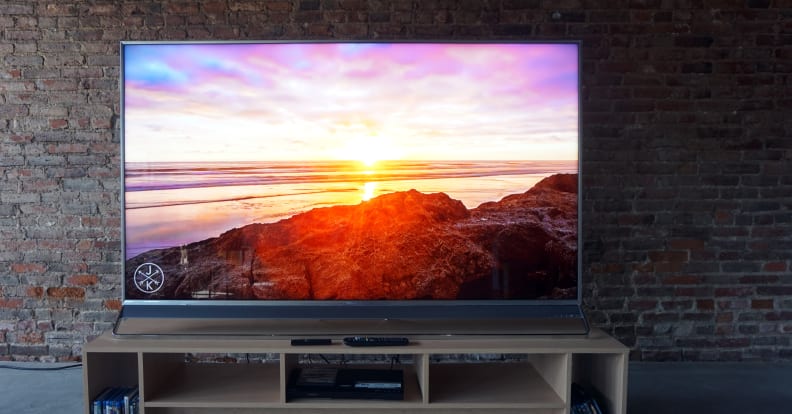
This is a part of what Hisense calls "ULED," which we think stands for Ultra LED. It refers to a collection of picture quality enhancing features including the TV's full-array local dimming, quantum dot-enhanced color, and the TV's native 120 Hz refresh rate with adaptive MEMC (motion enhancement/motion compensation).
This all sounds great on paper, and I can confirm that during viewing, the H10D is quite impressive, especially given the size of the screen. While we're proud of our test lab, it's not exactly gargantuan, making it hard to sit more than 7-8 feet from the huge 75-inch H10D. I was fully expecting to spot a bunch of little flaws while sitting so close and watching so intently, but was pleasantly surprised by the robustness of the H10D's picture quality.
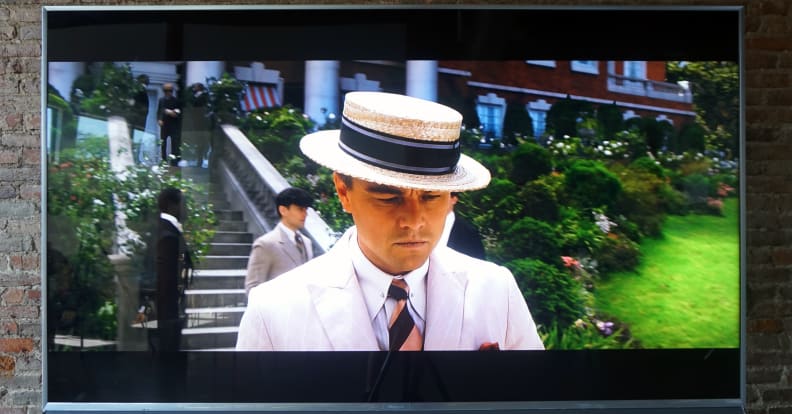
There are common hurdles for full-array local dimming TVs, especially of this size. Typically, bigger TVs tend to sacrifice brightness and color saturation—especially if they aren't full-array—in order to avoid the issue of flashlighting. The ones that don't often struggle with a different problem: blooming, where light from a lit LED zone seeps into the darkened zones around it.
While the H10D has a lot of LED zones, it isn't entirely immune to blooming, but it's much better in this regard than I was expecting. This is doubly impressive when you consider how bright and colorful this TV is overall. From a contrast/color/motion perspective, it looks mostly excellent during a wide variety of content.
The primary requirements for a good HDR TV are high peak brightness and color saturation that's notably higher than non-HDR TVs. Fortunately, the H10D "shines" in this regard as well, delivering an impressive peak brightness and ample color saturation. While the H10 doesn't support the Dolby Vision HDR format, it definitely gets the job done where 4K/HDR Blu-rays and HDR streaming content is concerned.

However, while it isn't a collection of "good enoughs," it's clear that the major draw of the 75H10D at the end of the day is how massive it is. It's certainly not the best-performing $6,000 TV on the market, but given its massive size and general lack of extraneous features, it might be the best 70+ inch value of 2017 so far.
And if you're worried about the tech, don't be—Hisense has delivered. Between the TV's myriad local dimming zones; quantum dot-enriched color; motion performance; and HDR performance, it's definitely a screen size and picture quality focused beast. It isn't the best performer by far, but it's very well-equipped for also being such a massive TV.
The smart features won't blow you away, but they're a welcome addition
I've been saying for a while how the best smart TVs are the ones that integrate a pre-existing platform (like Roku or Android) into their functionality rather than going with something proprietary. While the priciest and most "posh" sorts of TV sets often wield well-tooled smart platforms, they're still usually swamped with undesirable attributes like proprietary services getting first billing (here's looking at you, Sony Video) or paid ad space.

The H10D's smart features don't quite fall into that latter category, but like the overall design and remote control, they feel a bit cheap/underwhelming given the price of the TV on a whole. If you're looking for simplicity, you'll definitely get it here: easy access to apps like Netflix, Amazon Video, YouTube, and so on are as simple as pressing the "home" button on the remote and logging in (where required).
I watched content on apps like Netflix and YouTube and had no trouble streaming 4K and HDR content. In short, the core functions of the smart features work like they should. You'll get a few extras, like Bluetooth connectivity, but for the most part Hisense's smart features are minimal and to-the-point. In my opinion, it's a positive addition to the TV as a whole, but like with most TVs, not exactly a selling point.
Should You Buy It?
The jury is out—for now.
There are some very simple pros and cons for Hisense's big, boastful H10D. If you're looking for a really big TV that doesn't skimp on picture quality, the 75-inch H10D is a great choice. Between its nuanced, local dimming-equipped backlight, 4K resolution, and quantum dot-enhanced color, the H10D is a terrific performer. It offers up the contrast, color range, and overall brightness to deliver excellent picture quality, whether or not you're watching HDR content.
However, most $6,000 TVs will deliver pretty flawless picture quality—it's kind of what you're paying for. That said, almost any other TV I've ever seen in this price range also endeavors to deliver a "premium" experience across the board, and that's where the H10D differs. While the picture quality is great, the design and software here lack the polish of comparably priced models—like one of LG's high-end OLEDs—even if they're good enough for most viewers.
So what's the ultimate deciding factor? Size. If you want a 70+ inch OLED, it's going to take reverse mortgaging your home. The 75-inch H10D is a terrific value when you take both its staggering size and picture quality accolades into account. This isn't a product for the "Apple" crowd—people looking for premium polish from corner to corner—but for the meat-and-potatoes crowd looking for a huge TV that's super future-proofed. There are cheaper 75-inch TVs on the market, but they don't stand up to close scrutiny with quite the same panache as the H10D. We'll be updating this page with charts and test results for the Hisense 75H10D once we've tested a production model.
Meet the tester
Lee was Reviewed's point person for most television and home theater products from 2012 until early 2022. Lee received Level II certification in TV calibration from the Imaging Science Foundation in 2013. As Editor of the Home Theater vertical, Lee oversaw reviews of TVs, monitors, soundbars, and Bluetooth speakers. He also reviewed headphones, and has a background in music performance.
Checking our work.
Our team is here to help you buy the best stuff and love what you own. Our writers, editors, and experts obsess over the products we cover to make sure you're confident and satisfied. Have a different opinion about something we recommend? Email us and we'll compare notes.
Shoot us an email